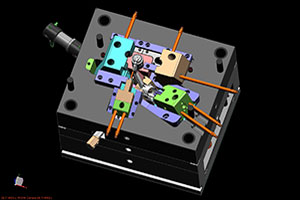 A lot of time and attention goes into making a successful plastic injection mold design. If you don’t get the design right, nothing you do is going to compensate for that later. Here are a few simple guidelines to help you get the right design from the beginning:
A lot of time and attention goes into making a successful plastic injection mold design. If you don’t get the design right, nothing you do is going to compensate for that later. Here are a few simple guidelines to help you get the right design from the beginning:
Determine if You Will Use a Prototype or Final Product
There are definite pros and cons to prototyping, and ultimately it depends on both your budget and timeframe. If you prefer to work slower and perfect it before giving your plastic injection mold design a full test, you won’t have to spend time reworking the same mold numerous times.
Primary Factors to Consider
Every mold design needs to take four primary factors into account before being made:
- Size of the mold
- Tolerances the mold must meet
- Thickness of the walls
- Drafts that show the revision of each design
The first three should be located on the specifications or requirements for the mold. If you do not have these, that should be the first step in the process because these three factors tend to be the reason that a mold either succeeds or fails.
The last item (drafts) is actually vital to ensuring that you have taken all of the other aspects into account and have worked to improve the mold based on any new information. Drafts give you a way of seeing where you have been and what did not work before or highlight areas where you think previous design versions were better.
Secondary Factors to Consider
Depending on your industry, these factors can be equally as important but not all may apply to your specific needs:
- Surface finish
- Undercuts
If you are in the aviation business, you know that the surface finish is important; however, it is not a requirement for all parts. Undercuts are critical on things like bottle caps, but not all molds will require undercuts as part of the plastic injection mold design.
Topics: Injection Mold Design

